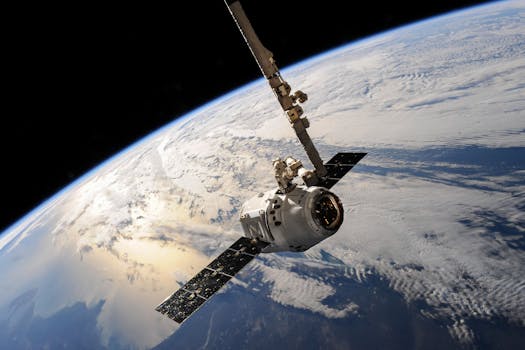
MEO Satellites: Revolutionizing Global Communication with Medium Earth Orbit Technology
MEO satellites, or Medium Earth Orbit satellites, are a type of satellite that operates at an altitude of around 2,000 to 36,000 kilometers above the Earth’s surface. This orbit is higher than Low Earth Orbit (LEO) satellites but lower than Geostationary Orbit (GEO) satellites. MEO satellites are designed to provide a range of services, including navigation, communication, and Earth observation.
Medium Earth Orbit technology has been gaining popularity in recent years due to its unique advantages. One of the main benefits of MEO satellites is their ability to provide global coverage while minimizing latency. Because they are closer to the Earth’s surface than GEO satellites, MEO satellites can offer faster communication speeds and more reliable connections. This makes them ideal for applications such as satellite broadband, mobile networking, and IoT connectivity.
How MEO Satellites Work
MEO satellites work by transmitting and receiving signals to and from Earth-based stations. They use a network of ground stations to communicate with the satellite, which then relays the signal to its destination. MEO satellites are typically equipped with high-gain antennas and transponders, which allow them to amplify and retransmit signals. This enables them to provide a strong and reliable signal, even at long distances.
MEO satellites are often used in constellations, where multiple satellites work together to provide continuous coverage of the Earth’s surface. This allows for seamless handovers between satellites, ensuring that the signal is never lost. Constellations of MEO satellites can be used to provide a range of services, including global navigation, mobile broadband, and Earth observation.
Applications of MEO Satellites
MEO satellites have a wide range of applications, including navigation, communication, and Earth observation. One of the most well-known applications of MEO satellites is the Global Positioning System (GPS), which uses a constellation of MEO satellites to provide location information and timing signals. Other applications of MEO satellites include satellite broadband, mobile networking, and IoT connectivity.
MEO satellites are also used for Earth observation, where they can provide high-resolution images of the Earth’s surface. This can be used for a range of applications, including environmental monitoring, disaster response, and crop monitoring. MEO satellites can also be used for scientific research, such as studying the Earth’s climate and monitoring the effects of climate change.
Benefits and Challenges of MEO Satellites
MEO satellites offer a range of benefits, including global coverage, low latency, and high reliability. They are also less expensive to launch and operate than GEO satellites, making them a more attractive option for many applications. However, MEO satellites also face a number of challenges, including interference from other satellites and the need for complex ground infrastructure.
Despite these challenges, MEO satellites are becoming increasingly popular for a range of applications. As the demand for global communication and navigation services continues to grow, MEO satellites are likely to play an increasingly important role in meeting this demand. With their unique combination of global coverage, low latency, and high reliability, MEO satellites are revolutionizing the way we communicate and navigate the world.




